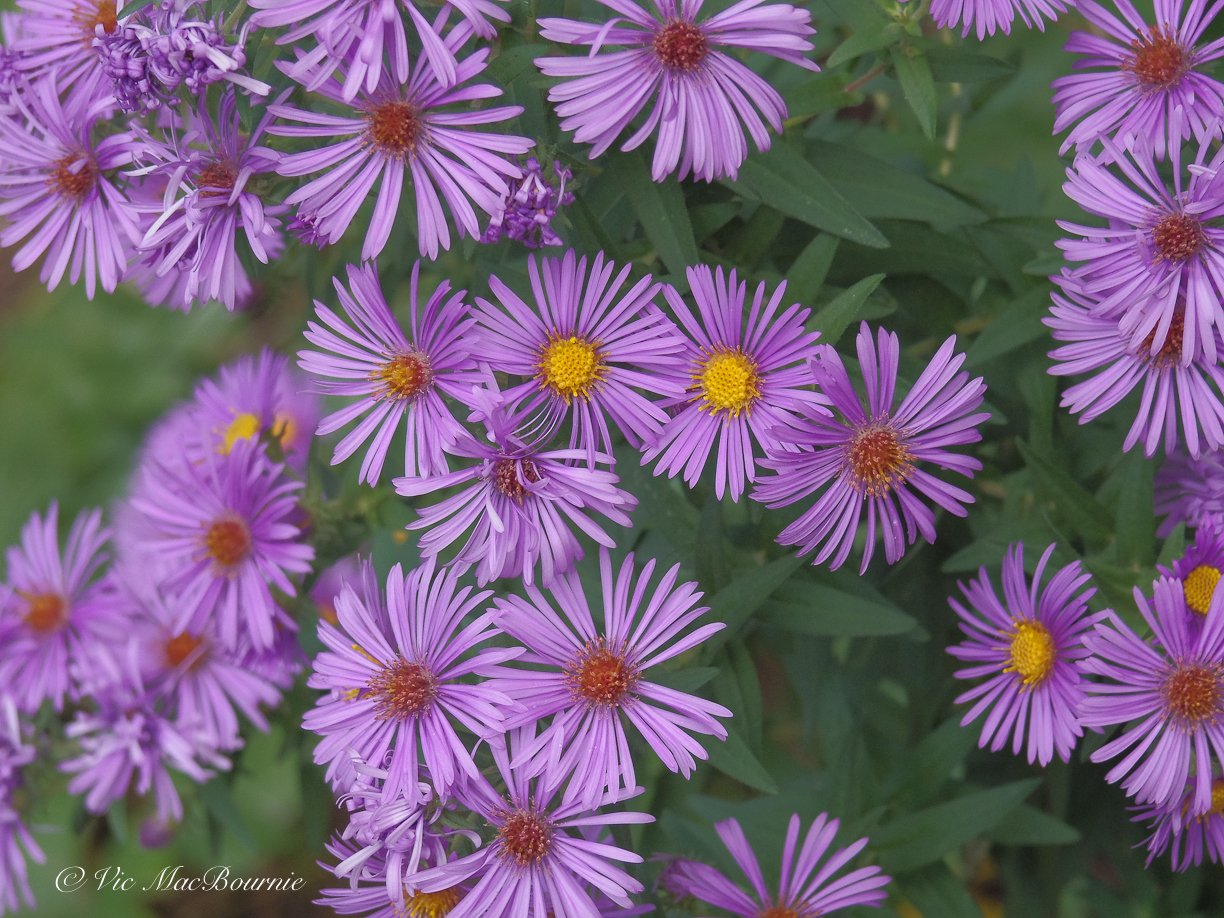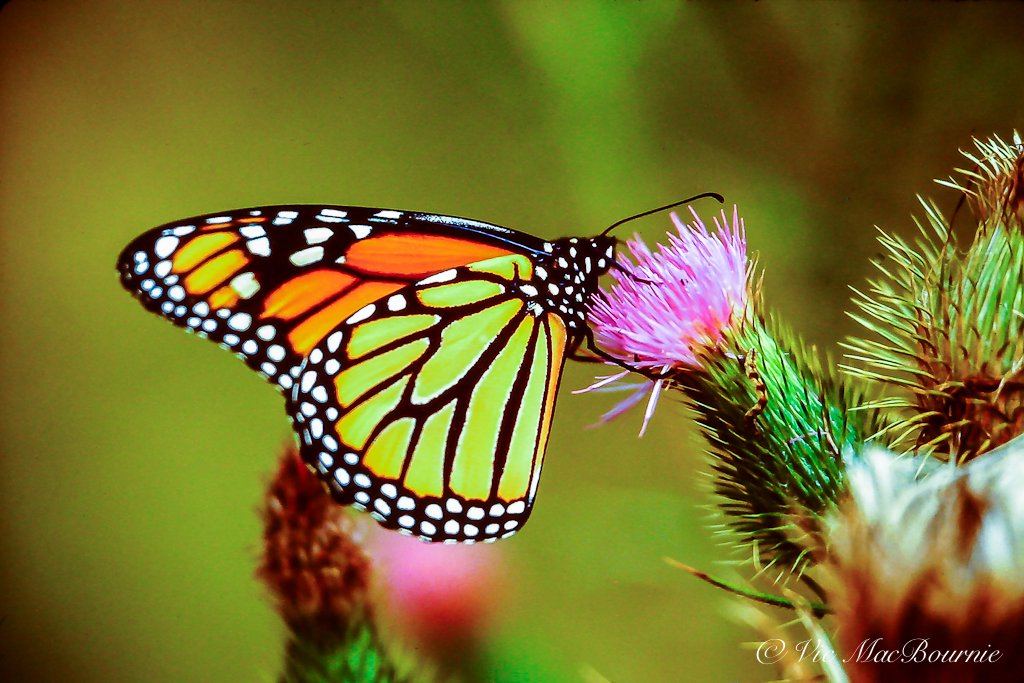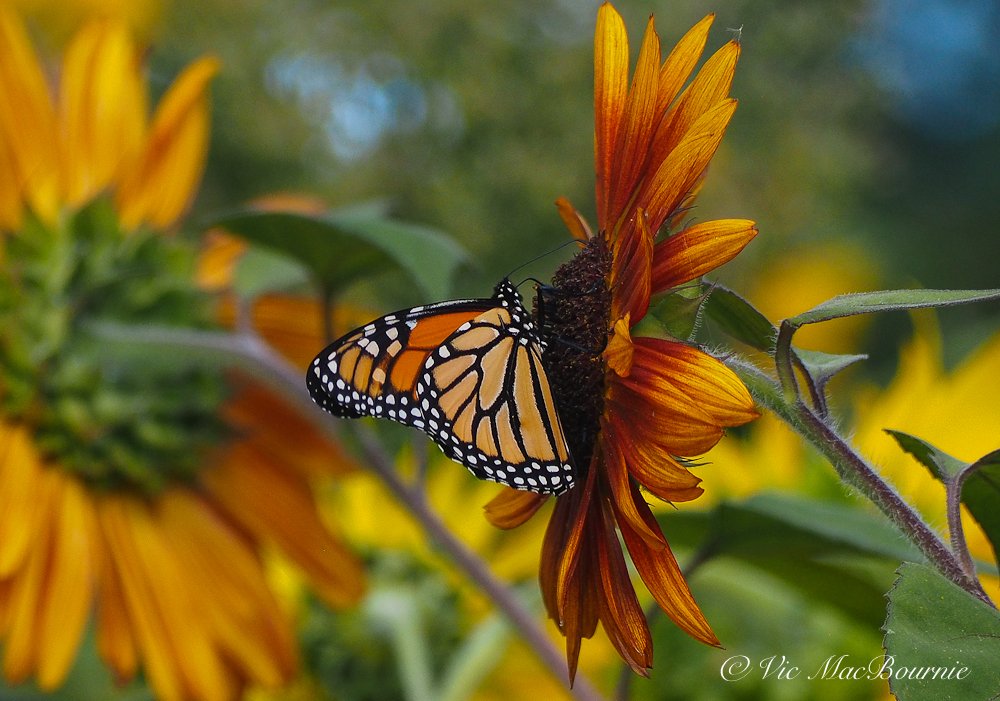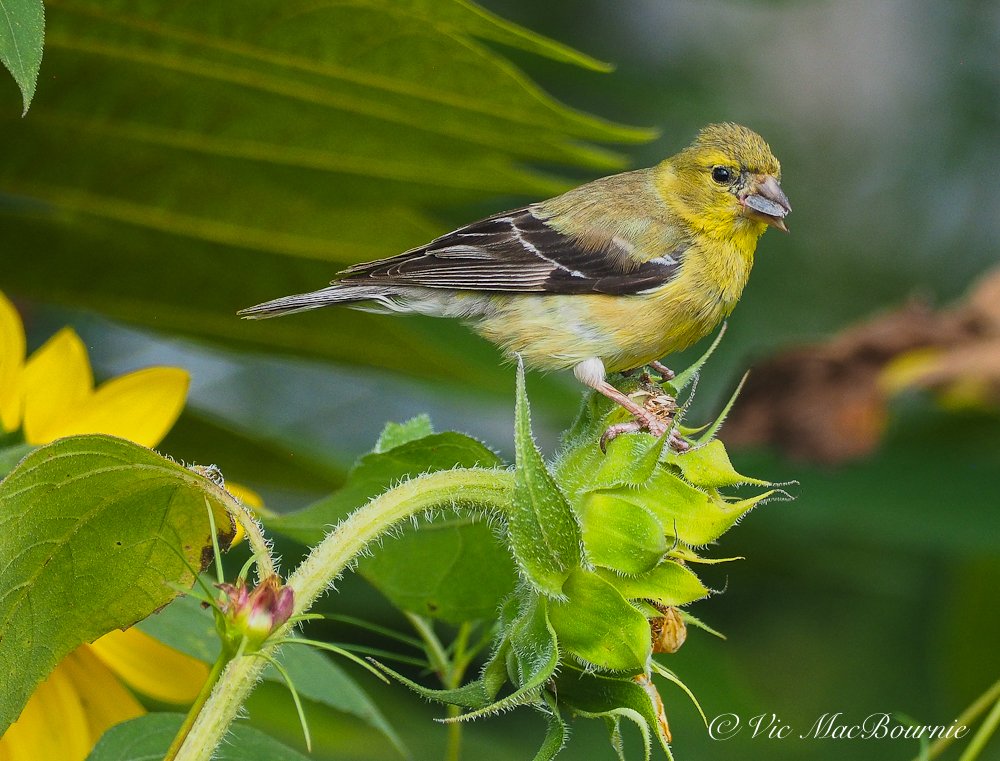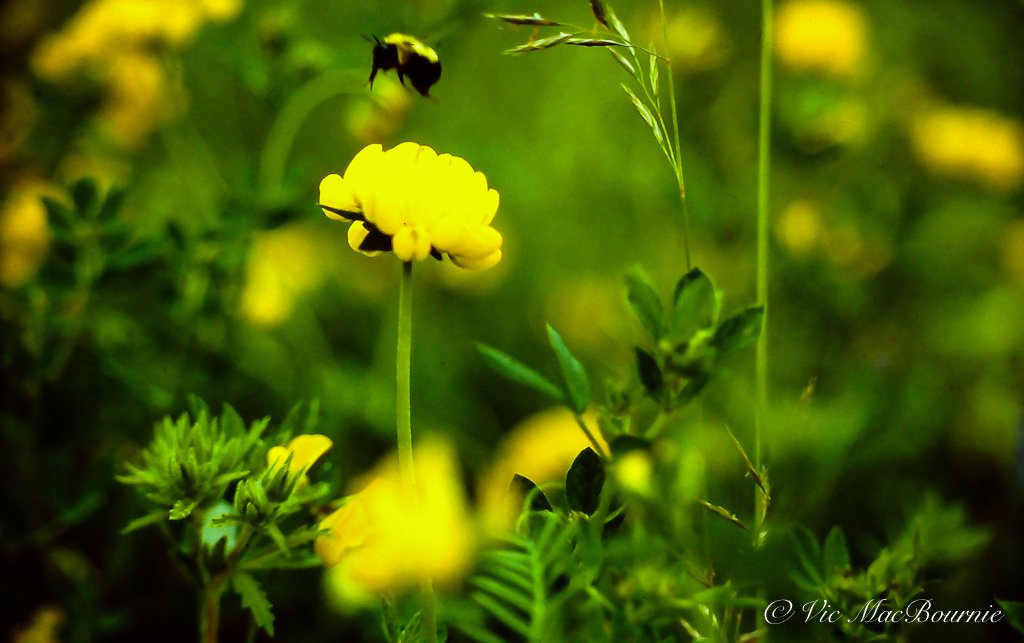How to grow and care for native Asters
Three native asters for the natural garden that provide late-season resources for pollinators and add a beautiful textural feel into the fall.
Three native asters: Ideal plants for our natural gardens
Our native asters are stealing the show in the meadows and open woodlands around our home reminding us that, if we are not already growing them in our gardens, its time to plant them for next fall.
In our garden the wood asters have made an appearance along with the Woodland Sunflowers, goldenrod and Black-eyed Susans across the back area of our garden.
Do Wood Asters attract pollinators?
The White Wood Asters (Eurybia divaricata), also known as Heart-Leaved Aster, are delicate whitish-blue flowers that add an airy feel to the garden and the perfect excuse for the small pollinators – native sweat bees and small butterflies as well as other insects – to stop by and enjoy a late summer harvest.
New England Asters growing in a naturalistic setting. What some people may think of as a weed, are actually beautiful native wildflowers that are vital to native bees and wildlife.
Embrace these plants and the somewhat messy look they sometimes bring to your garden and focus on the wildlife that find your garden aesthetics just perfect – because it is perfect – for them.
These perennial plants grow between 30 to 90 centimetres (12-35 inches) tall, with heart shaped leaves on the lower parts of the plant and changing to more elongated and deeply serrated on the upper reaches of the plant.
For more information on native plants, check out my earlier articles: 35 native wildflowers and Why we need to grow native plants.
If you are thinking about growing your own meadow garden, be sure to check out garden designer Angela den Hoed’s meadow garden and her five favourite plants for the meadow garden.
White wood asters, New England asters combine beautifully with goldenrod.
How to grow Wood Asters
These are a form of shade-loving asters that can be found growing naturally in dry, organic-rich woodlands and on the edges of forest areas in part shade.
Ours are growing happily on the edge of our ancient crabapple trees, where conditions seem almost ideal for them.
Although these asters will tolerate full shade or sun, they are happiest in part shade. Their beautiful, yet delicate branching clusters of pale blue flowers give a nice airy feel to the garden as well as providing a good source of nectar and pollination for both bees and butterflies.
Hardiness Zone: 3-7
Light: Part shade to full sun
Moisture: Tolerates dry soil, shade to part shade neutral to slightly acidic conditions.
Soil: clay loam to sandy loam, organic
Mature Height: 3-feet-high
Growth: Vigorous or aggressive, even in dry shade.
Propagation: Can be started from seed (seeds mature in late fall), by dividing clumps in early spring or allowed to spread entirely on its own.
This informative infographic designed by Justin Lewis shows the value of the New England Aster.
Are Wood Asters a threatened species?
The Wood Asters’ range is quite broad despite its extremely limited range in Canada where it is confined to a small number of sites in the Niagara region and in more southern areas as well as a few woodlots in southwestern Quebec.
In the United States the Wood Aster ranges from New England south into Georgia and Alabama.
In Ontario, according to the government’s website, the Wood Aster has been considered a threatened species since before 2008, meaning that the plants are not yet endangered but are on that path if action is not taken.
All the more reason to plant some of these delicate little flowers in your garden.
The government website adds these quick facts about the Wood Aster:
White wood aster seeds are dispersed by the wind but are generally not carried for long distances; this may account for its low colonization rate and restricted range
White wood aster is also known as the Heart-leaved aster because of the shape of its lower leaves
The flowers of White wood aster are attractive to butterflies and it is the host plant for Pearly crescents, a common North American butterfly
Right on cue our plants began to flower in mid September with their yellow and purple florets surrounded by the white petals.
The White Wood Aster likes to grow in colonies where it spreads via underground roots.
The plant’s decline in Ontario and Quebec is attributed to a number of factors, including habitat loss as well as competition from increased recreational activities ie: trampling by hikers, bikers and ATVs. Deer grazing and competition from invasive garlic mustard are also putting stresses on the plant in natural settings.
New England Asters in a naturalized setting growing among native grasses.
New England Aster: Dominant flower along roadsides and open fields
New England Asters are happy growing in part shade to full sun in our gardens and naturalized areas along our roadside and open meadows.
Plant them in sandy loam and these late summer/fall bloomers will reach heights of 5 feet with impressive, purple blooms sporting orange centres.
By cutting back the plant in mid-summer (Chelsea Chop: Link to Fine Gardening article), it’s possible to keep the plant a little more manageable throughout the fall.
New England Aster, like all late-blooming perennials, is a critical source of late-season nourishment for pollinators. If you have ever observed the plant in late summer, its attraction to native bees, butterflies and other insects is noteworthy.
New England Aster is distinguished from Smooth Blue Aster by its hairy stem.
Good companions plantings for New England Aster
If you have a meadow garden, consider pairing this aster with Goldenrod, Oxeye daisy, Woodland sunflower and late-season grasses.
Large Leaved Aster is another winner in the woodland
Large Leaved Aster (Eurybia macrophylla) grows in part shade to full sun in zones 3 to 9. It prefers a sandy loam with medium moisture and will grow to about 4 feet tall.
This is another shade-tolerant aster that can work in a woodland-style garden. Consider planting them on the edges or in small clearings where they can benefit from some sunny periods.
The plant’s pale blue blooms are secondary to the 4-8 inch heart-shaped basal leaves that form almost a ground-cover-like carpet.
In conclusion: Asters are important in our landscapes and natural areas
It’s easy to disregard the importance of Asters in our landscapes. Many gardeners focused on aesthetic, non-native gardens would consider the plants weeds and eliminate them as soon as they seem these perennials encroaching on their gardens.
This approach is one of the main reasons asters are disappearing in gardens and open meadows throughout North America and Europe.
In turn, our native bees, butterflies, caterpillars and other insect numbers are falling and threatening the health of our birds that depend on these insects to survive and feed their young.
As woodland or naturalistic gardeners, it is rewarding to know that we are doing our small part to restore the ecosystem and protect plants that are either threatened or spiralling downward.
Embrace these plants and the somewhat messy look they sometimes bring to your garden and focus on the wildlife that find your garden aesthetics just perfect – because they are perfect.
Tips to create a mini meadow-inspired garden
Creating a mini meadow garden in a sunny area of your yard is an excellent way to attract a variety of pollinators from bees to butterflies and everything in between.
Can I have a meadow garden in a small space?
Just like you can create a woodland-inspired yard in today’s smaller urban backyards, so too can you find a sunny spot in your backyard to create a meadow-inspired garden that will bring you many of the same joys that a full-sized meadow offers.
That includes a natural, ever-changing planting with an abundance of colour and texture that is a magnet for birds, butterflies, bees and other pollinators.
In a small garden, you may not be able to have the meadow of your dreams, but with the right plants you can have one most gardeners only dream about. And creating it is relatively simple.
I have been working on creating a meadow-inspired garden across a small hill located at the back of our yard that gets strong afternoon sun despite being under the canopy of two old crabapple trees.
By transplanting native grasses such as Little Bluestem, Black-eyed Susans, Purple Coneflowers, native sunflowers and other meadow plants, I have been able to fill in a good portion of the hillside garden. I expect to see some positive results from my efforts this summer as the plants begin to grow in and take shape. More native plants and seeds will follow this season to help fill in any empty areas. I’m also counting on nature to do its thing as well to help me along the path to a lovely little meadow-inspired garden.
In their book, Garden Revolution, How our Landscapes can be a source of Environmental Change, Larry Weaner and Thomas Christopher, write: “Native meadow is likely the best answer to North America’s over reliance on lawn, a means of saving the enormous quantities of water, fertilizer, herbicides, pesticides, and fossil fuels annually invested in the cultivation of turf. Unlike shrublands and forests, meadows can be established from seed in a relatively short time to gravitate toward open space and expansive views, attributes not common in a forest or shrubland.”
The authors ask why, then, does grass continue to dominate our landscapes?
They point to the quality of seed that has been sold in the past to create these meadows and the desire by homeowners to have an instant meadow in a single season.
“Meadows can work, but only if the gardener selects plants and uses techniques that reflect the local habitats and ecological processes that will affect their survival and proliferation.This is why successful meadow will look quite different in different regions.”
Goldfinch works on a sunflower in a naturalized flower border.
For more on creating a naturalized meadow and wildlife habitat, be sure to check out my post Fields of Gold: Sunflowers and Goldfinches.
Their approach to creating a successful meadow is a fascinating look at working with nature using native plants and a more ecological approach. Although it is aimed at creating and maintaining large meadows with the least amount of work, their approach is certainly one that works in a mini meadow-inspired garden.
If you have visions for a larger meadow, Garden Revolution is a must read gardening guide to creating meadows and other inspirational gardens by working with native plants.
If you are interested in exploring this approach in greater detail, check out my more extensive post on Garden Revolution here.
• For more on creating a meadow garden, check out this comprehensive post on how Garden designer Angela den Hoede created one at her home.
• If you are looking for ideas on using low-growing ornamental grasses, be sure to check out my post on Five low-growing ornamental grasses.
The following, however, are some tips on creating your mini meadow-inspired garden.
A monarch takes a moment to work on the flower of the common thistle. Letting your meadow go a little “weedy” can attract some beautiful friends for a visit.
What’s the difference between a Meadow or Prairie garden?
Whether you choose a meadow-inspired garden or a prairie-inspired garden, the process is somewhat similar.
• If you want mostly colourful flowers, then a meadow-inspired garden is the direction you want to go. Use ever-blooming annuals to get your garden going. In fall dig them into the garden and replant for next year. Or plant your meadow with perennials that also flower generously (oxeye daisies, coreopsis and black-eyed Susans). Eventually a combination of the two will give you a good start on your continuous flowering meadow.
• If you are more a fan of grasses than you might want to lean to a more prairie look. Grasses rather than flowers hold centre stage in the prairie garden. In mid summer, however, the prairie leaps into bloom with wildflowers that complement the height and habit of grasses.
• A meadow planting is shorter than the prairie-inspired garden that features grasses like Big Bluestem, compass plant and others that can easily reach head height and beyond. If you still like the prairie look, there are plants that stay on the shorter side such as Prairie Dropseed, grama grass, foxtail barley, butterfly weed and blanket flower to name just a few.
• In a meadow garden, more attention will have to be paid to maintaining the existing flowers because these gardens tend to want to move toward grasses unless given proper guidance.
It won’t take long for pollinators like this native bumblebee to find your mini meadow.
Six steps to a Meadow Startup
Sally Roth, in her informative book Natural Landscaping: Gardening with Nature to Create a Backyard Paradise, provides the following steps to create a Meadow-inspired garden.
Strip or smother existing sod.
Till or turn the soil until it is smooth.
Water the area thoroughly with a fine to medium spray.
Wait for weed seeds to sprout. Slice off with the blade of a hoe, taking care not to disturbthe soil. Repeat as often as you have patience for.
Sow meadow garden seed.
Weed until meadow seedlings are well on their way.
For a fast Meadow mix from seed, Roth suggests the following plants be included
Baby blue eyes: (Nemophila menziesii) This delicate low-grower has charming blue flowers above a ferny foliage.
Bachelor’s-Buttons: (Centaurea cyanus) Branched and bushy plants with long-lasting blooms in blue, pink, rose, white and deep red-purple.
California poppy: (Eschscholia californica) Vivid orange flowers that form cups above lacy gray-green foliage. Pink and purple cultivars are also available.
Calliopsis: (Coreopsis tinctoria) A graceful, knee-high plant with abundant gold, russet, mahogany, or two-toned daisies and ferny foliage.
Corn cockle: (Agrostemma gitbago) Simple, silky flowers in vivid magenta-purple atop a branching midheight plant with grayish foliage.
Other plants to consider include: field poppy, Scarlet flax, Cosmos, Tickseed, sunflower.
If a more perennial style garden is more to your liking consider the following plants
Birdfoot violet, Black-eyed Susans, Bluets, Butter-and-eggs, Butterfly weed, Foxtail grasses, Goldenrods, Heath aster, Heliopsis, Little Bluestem, Moth mullein, New England Aster, Oxeye daisy, Panicled aster, Wild bergamot, Winged sumac and Yarrows.
If you are on the lookout for high quality, non-GMO seed for the Pacific North West consider West Coast Seeds. The company, based in Vancouver BC says that “part of our mission to help repair the world, we place a high priority on education and community outreach. Our intent is to encourage sustainable, organic growing practices through knowledge and support. We believe in the principles of eating locally produced food whenever possible, sharing gardening wisdom, and teaching people how to grow from seed.”
Tips to attract birds to your mini meadow
Remember to plant the flowers that set seeds that you know will attract birds later in the season. Both annual and perennial sunflowers (see story) are good for starters, as are cosmos and coneflowers.
Allow the “weeds” to take root. The seeds and or fruits of lamb’s quarters, pigweed, pokeweed and ragweed will attract a variety of birds.
Leave areas of the garden undisturbed as much as possible. These are excellent areas for birds to tuck their nests in to shrubby plants or even grasses.
Plant perennials that spread into large colonies to create cover for the birds.
Leave the leaves and don’t cut your meadow until spring or, if necessary, late winter so that birds can seek food and shelter in standing plants throughout the cold months.
Butterflies you may attract to your meadow-inspired garden
Depending on where you garden, you can expect to see many of the following butterflies in your mini meadow-inspired garden.
Buckeye
Cabbage White
Common blue
Common Sulphur
European skipper
Gray hairstreak
Indian skipper
Meadow fritillary
Monarch
Orange sulphur
Painted Lady
Pearly crescentspot
Red admiral
Red-spotted purple
viceroy
Zebra swallowtail
Much of the information from this article is from Sally Roth’s informative book Natural Landscaping. For more in depth information check out her gardening book.
Making a difference: Shannon turns monoculture farm into a pollinators’ paradise
Shannon McNally is just one of the many women making a difference in the preservation of nature. Shannon and partner, Justin, were recognized for their work in restoring a once monoculture farm into a pollinator’s paradise. Shannon’s work with monarch butterflies also shows her commitment to the natural world.
NAPPC recognize her tireless work
It’s easy to excuse Shannon McNally for being nervous when she accepted her award from NAPPC as Canada’s best Farmer-Rancher.
Afterall, accepting an award from experts in the field of pollination – professors, scientists and other highly educated seasoned professionals – is one thing, but when it’s the first award you can remember receiving since a 4th Grade fairness award, it’s a big deal.
Especially when you’re only in your 20s, have no formal education in the field and very little experience in farming.
As you can imagine, receiving a national award from the North American Pollinator Protection Campaign (NAPPC) and the Pollinator Partnership, is a VERY BIG deal.
Shannon and her partner, Justin, received the award for converting more than 33 hectares at White Church Farm of a monoculture soy and corn farm in Hamilton, Ontario, Canada, into a pollinators’ paradise.
“It’s been five years ago now when I made the decision to join all of you who have been fighting for a greener future,” she said in her acceptance speech for the award.
“In 2017, Justin and I both quit our jobs to become first-generation farmers. At the time I was 23 years old with little experience or related formal education. My strengths relied entirely on my relentless passion for creating more space for nature and using the internet,” she explained.
“Caring was truly my biggest asset. I wanted to highlight that because I know that each and every one of you have that same strength too,” she said in a zoom call to an audience of co-award winners, organizers, professors and experts in the field.
Her passion for the environment and her dedication to making a difference in a natural world where climate change is threatening everything she cares so much for led her to take on the challenge.
Shannon McNally in one of the fields she works in Hamilton, Ontario Canada. Photo courtesy Shannon McNally.
“If I had waited until I felt confident enough, experienced enough or educated enough to start trying to make a difference, I would never have started. As a rookie in this community, I was constantly inspired by all of you and truly humbled to be in your company and to connect with you today,” Shannon said in her speech.
Since taking on the challenge, Shannon has been working hard to reshape the land with a plan for long-term biodiversity.
Bringing back nature
Each year, she works to restore large areas by planting permanent, native plant species including up to 30 trees and hundreds of perennial wildflowers. And that was just last year.
In addition, she has also planted more than 5 acres in permanent, mixed bee forage, created clover pathways around the farm, cultivated diverse, mature tree lines and hedgerows, and recently established a 2-acre permaculture orchard.
Each year, the farm grows a succession of sunflower fields for bee forage and bird seed and they plant a cover crop for pollinators.
“In this era of climate crisis, she explained in her acceptance speech, “we need everyone’s strength and contribution. Each of us has such an important role to play and we no longer have the luxury of time to get in our own way.
Her call to action did not go unnoticed by her peers at the NAPPC awards ceremony.
“NAPPC is thrilled to recognize Shannon McNally with the 2021 Canadian Farmer-Rancher Pollinator Conservation Award,” says Dr. Lora Morandin, Research and Conservation Director at Pollinator Partnership.
“Shannon’s work to provide habitat for pollinators and support biodiversity on her farm is an excellent example of how growers can incorporate conservation within their production systems. Creating pollinator habitat also supports beneficial insects that control pest insects, which can reduce the need for chemical pest control. We hope that the work Shannon and other farmers are doing to help pollinators provides inspiration to others to find ways to support pollinators and other wildlife or their farm or in their yard.”
The North American Pollinator Protection Campaign is a coalition group administered by Pollinator Partnership. NAPPC's mission is to encourage the health of resident and migratory pollinating animals in North America.
P2’s mission is to promote the health of pollinators, critical to food and ecosystems, through conservation, education, and research. The Canadian arm of Pollinator Partnership (P2C) is a registered not-for-profit organization.
The organization is quick to point out that pollinators perform a nearly invisible ecosystem service that is a precious resource requiring attention and support. It adds that disturbing evidence found around the globe, shows that pollinators and the service they provide is increasingly in jeopardy.
Shannon is more than aware of the ever emerging deadline she and others face to not only slow the trend but to work hard to reverse the trend as quickly as possible.
Not unlike woodland gardeners toiling away to rewild their small urban or rural plot of land using native plants, trees and shrubs, Shannon also realizes that the work she is doing on the small farm is just one step in the solution.
Her work with Monarch butterflies this past year is an example of her commitment to helping wildlife and was one reason she was recognized by NAPPC.
Helping monarch butterflies through social media
“I really enjoy participating in conservation efforts, but often feel overwhelmed by wanting to help ALL of the at-risk and endangered species,” Shannon wrote to her Facebook followers earlier this year.
“I do as much as I can here, but I feel the biggest impact I have is through sharing on social media. The possibility of someone being inspired into action and the potential ripple effect that could have is what gets me the most excited,” Shannon explains.
“With so many disheartening headlines these days, finding joy in nature and cherishing the positive outcomes from even the smallest of actions is worth celebrating. My hope with sharing this is that you can feel the same joy I do when I watch these monarchs fly away after 5 1/2 weeks of attentive care.”
In the coming year, Shannon plans to restore a riparian area with native trees and shrubs as well as install a monarch-focused garden featuring three milkweed species.
The work she is planning on a monarch-focused garden follows her success this past year of raising 100s of monarchs from eggs and sharing her work with others through social media.
Plans are still in the works for next year but Shannon says her focus will be on creating habitat for other native species rather than any rearing and releasing monarchs.
“It was a wonderful, educational and inspiring experience this year and I'm excited to see what next year has in store.”
More NAPPC award winners
Some of the other 2021 Pollinator Award Winners included:
2021 NAPPC POLLINATOR ADVOCATE - UNITED STATES
This Charleston, SC based non-profit organization works to engage students of all ages within their own environments through observation-based learning. Ted Dennard, a lifelong beekeeper and the founder of Savannah Bee Company, and Tami Enright, a fellow beekeeper and environmental educator, have dedicated their lives to protecting pollinators, founding The Bee Cause Project and securing a national partnership with the Whole Kids Foundation. The organization solicits honey bee grant and observation hive program receives hundreds of schools’ participation applications annually, and more than 550 schools and organizations have received bee grants to date, impacting thousands of children across North America. They have also introduced digital hives as an alternative for schools or community centers that cannot host a live beehive, and have just launched a Pollinator Garden Grant for Libraries.
DAN AND MICHAEL O’LOUGHLIN
2021 NAPPC-NACD FARMER-RANCHER - UNITED STATES
Dan and Michael O’Loughlin operate a 200-acre farm in Yamhill County, OR that primarily grows tall fescue seed. There are few pollinator initiatives in Oregon that the O’Loughlins have not supported or helped, including having surveyed bees at over 1,500 locations for the Oregon Bee Atlas, having worked with the county to establish trials assessing roadside pollinator seed mixes, having created pollinator habitat at schools through the State School Garden Network, and having served as leaders in the State Pollinator Protection Initiative, the Oregon Bee Project. O’Loughlin Farm has also made major strides to increase insect biodiversity. The farm rarely uses insecticides owing to the high endemic populations of beneficial insects and vertebrates, and insectary plantings are key to this strategy. Many of the plants they use are important nectar and pollen sources and butterfly host plants.
2021 NAPPC POLLINATOR ADVOCATE – CANADA
Pollination Guelph, founded in 2008, is an entirely volunteer-run charitable organization that focuses on protecting pollinator habitats by building and maintaining public and private gardens throughout Guelph, ON. Several notable projects include Eastview Pollinator Park, The Gosling Pollinator Gardens at Hospice Wellington, Trans Canada Trail Pollinator Gardens, and Clair Road Emergency Services Centre Pollinator Habitat Meadow. In addition to on-the-ground work, Pollination Guelph reaches out to its diverse audience with numerous education initiatives and advocacy campaigns through their website in the form of videos, web links, downloads, factsheets, and newsletters on a wide range of topics. The organization also hosts an annual symposium featuring workshops and networking opportunities that is attended by people from all over Canada. In addition, their Community Grant program enables other nonprofit groups in Guelph to establish and maintain pollinator habitat. In 2021, this program provided a total of $10,000 to 16 local organizations.
ESPECIES, SOCIEDAD Y HABITAT, A.C.
2021 NAPPC POLLINATOR ADVOCATE – MEXICO
Especies, Sociedad y Habitat, A.C. (ESHAC) is a nonprofit organization that uses a human community-centered approach to implement projects that promote the conservation of natural resources and endangered species while promoting sustainable use of biodiversity. ESHAC has implemented more than 30 projects in northeast Mexico, impacting more than 30,000 hectares of priority area for conservation in the region. Over the last five years, ESHAC has been collaborating closely with Don Martin-CONANP to promote the conservation of the Mexican long-nosed bat (Leptonycteris nivalis), with special emphasis on protecting cave roosts and enhancing foraging habitat along their migratory corridor. To date, they have planted over 9,500 agaves near critical roosts and restored over 250 hectares of habitat. They have also worked with local communities to develop holistic management approaches, train 79 individuals form 5 communities in sustainable and regenerative agriculture and grazing techniques, and pioneer a drone-based survey protocol to evaluate foraging resources for pollinating bats at the landscape level.
EMILIO VIEYRA
2021 NAPPC FARMER-RANCHER – MEXICO
Emilio Vieyra owns and operates Mezcal Don Mateo de la Sierra to produce one of the few environmentally friendly, sustainable mezcals. He ensures that the areas where they grow agaves remain forested and was one of the first to receive recognition of Bat Friendly© practices, keeping the recognition each year since 2016. In keeping with this recognition, Emilio allows at least 5% of his agaves to flower for bats and other pollinators. The majority of bats visiting their plants are the endangered Mexican long-nosed bat (Leptonycteris nivalis), showing the impact of their practices at the local level. Regionally, Emilio is educating his peers and extending his practices to other mezcal producers. He also hosts practical seminars covering all his production processes for bartenders and others during the flowering season, creating many other promoters of Bat Friendly© practices in the process.
TORONTO AND REGION CONSERVATION AUTHORITY
2021 NAPPC ELECTRIC POWER
Toronto and Region Conservation Authority’s (TRCA) The Meadoway is an active urban restoration project in Toronto, ON that encompasses 200 hectares and 16 linear kilometers of the Gatineau Hydro Corridor between the Don River Ravine and the Rouge National Urban Park. The goals of the revitalization are to create and maintain a diverse, native meadow habitat for local wildlife and to create and active East-West link between Toronto and the Rouge National Urban Park. Full project completion is expected by the end of 2024, but by the end of 2021, 64 hectares will have been restored, completing 70% of the project. The Meadoway will connect seven rivers and ravine systems, 15 parks, 16 km of trail, 13 neighborhoods, over 200 hectares of greenspace, and more than 1,000 diverse species of flora and fauna. Corporate and community groups have also been engaged as participants in stewardship activities including the planting of native potted stock, garbage collection, invasive species removal, and interpretive walks.
More on Pollinator Partnership
Pollinator Partnership’s mission is to promote the health of pollinators, critical to food and ecosystems, through conservation, education, and research.
The Pollinator Partnership is working to protect pollinators and their habitat with projects all over the North America and globally. See what local and regional initiatives are active near you.
Pollinator Partnership Canada (P2C) is a registered not-for-profit organization dedicated exclusively to the protection and promotion of pollinators and their ecosystems through conservation, education, and research.
Birds, bats, bees, butterflies, beetles, and other small mammals that pollinate plants are responsible for bringing us one out of every three bites of food. They also sustain our ecosystems and produce our natural resources by helping plants reproduce.
Pollinating animals travel from plant to plant carrying pollen on their bodies in a vital interaction that allows the transfer of genetic material critical to the reproductive system of most flowering plants – the very plants that
bring us countless fruits, vegetables, and nuts,
½ of the world’s oils, fibers and raw materials;
prevent soil erosion,
and increase carbon sequestration

